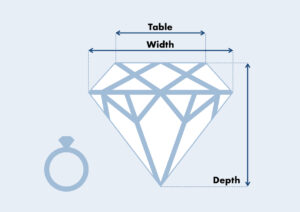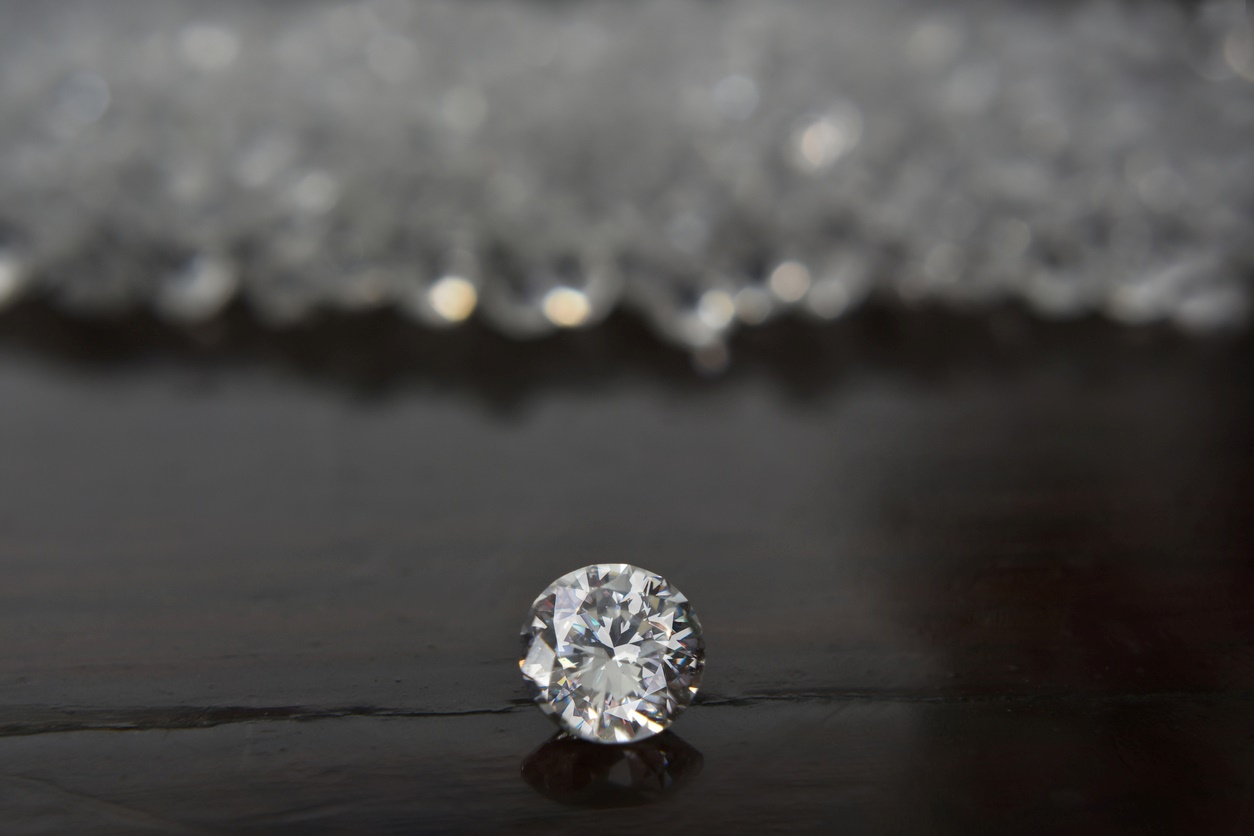When it comes to diamonds, the term carat is frequently mentioned, yet it’s often misunderstood. Simply put, a carat is a unit of weight specifically used for gemstones, not an indication of their size or dimensions. Understanding exactly what a carat means will help you make informed decisions when buying diamond jewelry. A single diamond carat equals precisely 0.2 grams.
Origin and etymology of the word carat
The term carat has an interesting history rooted in ancient times. It comes from the Ancient Greek word kerátion, meaning carob seed. Historically, carob seeds were thought to have consistent weights, which made them useful for measuring gemstones and gold. However, modern technology has shown that carob seeds actually vary quite a bit in weight. Over time, the term carat became standard in jewelry terminology, specifically referring to gemstone weight. Today, carat remains the standard unit used worldwide to express diamond weight.
Measuring diamonds: how carats work
A carat is a precise unit of measurement used specifically to weigh diamonds and other gemstones. One carat equals exactly 0.2 grams, so five carats make up a full gram.
To simplify things further, jewelers use a points system. Think of it like euros and cents: 100 points equal 1 carat, just as 100 cents equal one euro.
A half-carat diamond is therefore expressed as 0.50 ct, similar to writing fifty cents of a euro as €0.50. This makes diamond weights easy and intuitive to understand when you’re choosing jewelry.
Why don’t we use grams to weigh diamonds?
You might wonder why jewelers don’t simply measure diamonds in grams. The reason is practical: grams are too large for conveniently expressing the tiny weights of diamonds. If we used grams, a 1 gram diamond would weigh an impressive 5 carats!
Besides, would you really prefer using grams? We think 0.5 ct sounds better and more appealing than 100 milligrams. Don’t you agree?
Carats vs. karats: clearing up the confusion
Though they sound the same, carat and karat refer to very different things:
- Carat: refers exclusively to gemstone weight, primarily diamonds.
- Karat: indicates the purity of gold, with 24 karat gold representing pure gold.
Simple tip to remember: carat is for diamonds, and karat is for gold.
Why carat weight matters in diamonds
Carat weight matters because it directly influences how rare —and therefore valuable— a diamond is. Usually, heavier diamonds (with higher carat weights) are rarer, making them more valuable in the market.
However, carat weight alone doesn’t say everything about a diamond. Two diamonds with identical carat weights can still be very different in appearance, brilliance, and overall value because of their cut and depth. In other words, while carat weight is important, it’s just one piece of the puzzle.

Beyond carats: how cut and depth shape a diamond’s beauty
Carat weight tells you how much a diamond weighs, but it doesn’t tell you how good it looks.
Cut and depth matter just as much. Depth is the distance from the flat top (table) to the pointy bottom (culet). If a diamond is too deep, it looks smaller and loses brilliance. If it’s too shallow, it sparkles less.
A well-proportioned depth gives you more sparkle, more visual size, and more wow.
Fancy cuts like oval or emerald spread the weight differently. That’s why two diamonds with the same carat can look very different in size. It’s the cut and depth that make a diamond truly shine.
How does carat weight influence diamond pricing?
Carat weight has a big impact on diamond prices, but it’s not the only thing that matters. A diamond’s value comes down to the four Cs: carat, cut, color, and clarity. And cut is often the one that makes the biggest difference.
- A 1-carat diamond isn’t just twice the price of a 0.5-carat diamond. It’s way more. Larger diamonds are rarer, and that rarity drives up the price.
- But bigger doesn’t always mean better. A smaller diamond with an exceptional cut can look brighter and more stunning than a larger, poorly cut one.
Think of it like paintings. A massive canvas painted by an amateur doesn’t compare to a small masterpiece by Picasso. The same goes for diamonds: quality beats size every time.
Practical tips: choosing the right diamond
When picking a diamond, focus on what really matters:
- Carat weight: pick a weight that matches your budget and style.
- Cut quality: a well-cut diamond shines brighter and looks better. Prioritize this over sheer size.
- Depth proportions: a balanced depth enhances both sparkle and perceived size.
- See it in person: if possible, check the diamond yourself to appreciate how it truly looks.

Key takeaways for diamond buyers
A diamond’s value isn’t defined by carat weight alone. Here’s a quick recap of what truly matters:
- Carat refers to weight, not size.
- Cut and depth directly influence brilliance and how large the diamond appears.
- Quality beats size: a smaller, well-cut diamond often outshines a larger, poorly cut one.
- Meaning matters: a diamond with a story is far more powerful than one that’s just big.
At Brilianto, we craft our diamonds from carbon sourced from iconic places like FC Barcelona’s Spotify Camp Nou and SL Benfica’s Estádio da Luz. They’re more than gemstones. They’re history you can wear.
The bottom line: a diamond’s cut, depth, and story matter just as much as its carat weight. A well-informed buyer looks beyond the number.
Our signature collections
To celebrate football legends, Brilianto has created three unique diamond collections:
Two of them honour FC Barcelona’s legacy, with diamonds crafted from the iconic Spotify Camp Nou grass. The third celebrates SL Benfica, featuring diamonds made from the Estádio da Luz pitch.
